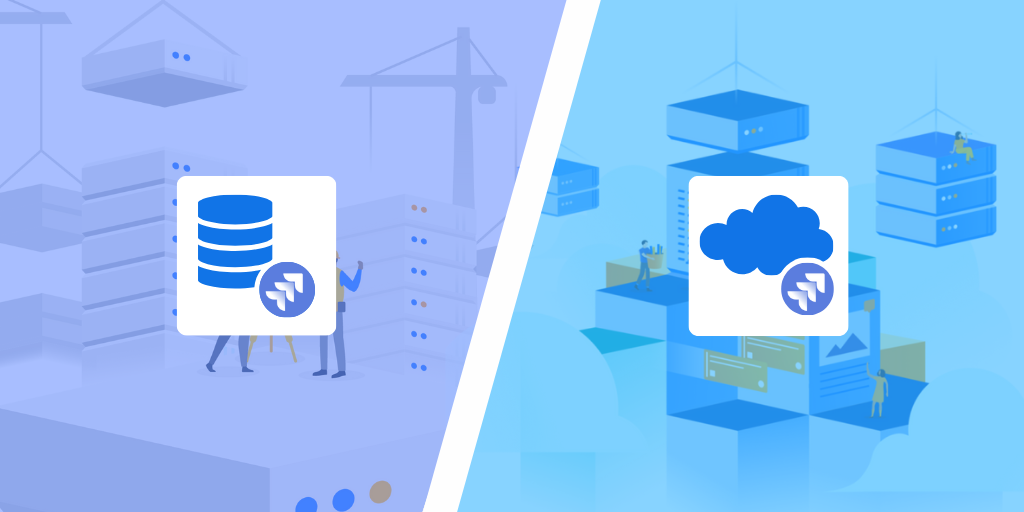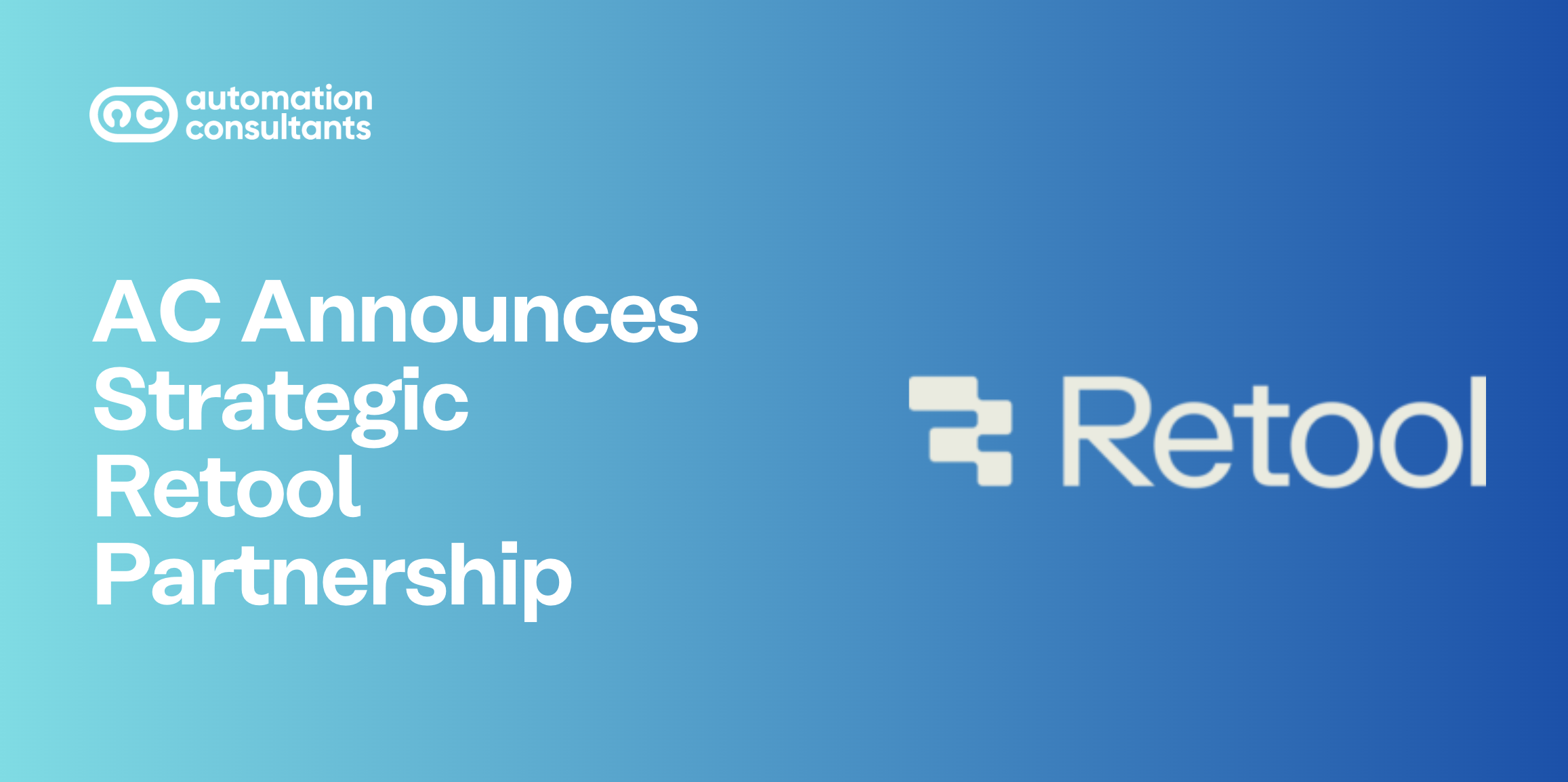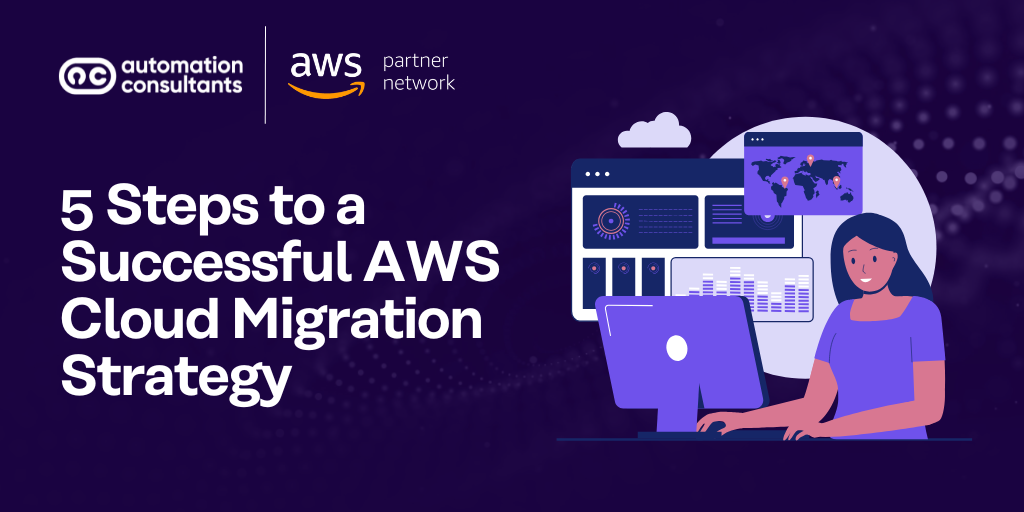If you’re considering implementing Jira, you’re likely aware that you can choose one of two hosting options.
With Jira Data Center, you can self-manage, which means hosting Jira on your own infrastructure. This could be done using your own physical Data Center, or deploying on a commercial cloud vendor, such as AWS, Azure or GCP.
Alternatively, you can use Jira Cloud as a SaaS (Software as a Service) product, which is entirely built and hosted on Atlassian’s own Cloud platform.
There are pros and cons to both of these approaches. So, if you’re not sure which of these hosting options is suitable for your needs, allow us to cut through the noise and guide you through it.
We’re going to evaluate four crucial elements of Jira Data Center vs Jira Cloud for you:
Control and compliance
Cost
Performance
Functionality
Are you ready? It’s time to explore: Jira Data Center vs Jira Cloud!
Data Center vs Cloud: A little context
Let’s set the scene for you here.
Until recently, Atlassian provided support for its products across three different hosting options:
Server
Data Center
Cloud
Both Jira Server and Data Center products enabled customers to self-manage their infrastructure (although we have tended to recommend that clients use Data Center instead of Server, where possible, as typically you can expect greater reliability and flexibility).
However, Atlassian will now be ending Server support on 15th February 2024. So organisations, perhaps like your own, using Jira Server are facing a choice. Do they forgo self-hosting and embrace the Cloud? Or do they switch from Server to Data Center?
Why is Atlassian removing Server support?
It’s a good question. The short answer is that Atlassian believes that Cloud is the future. And there are many good reasons for doing so, including cost and product enhancements.
But we know many organisations simply aren’t in a position to migrate to the Cloud. Whether due to compliance or data security requirements, considerations around cost, or because of limitations in Cloud functionality, we need to acknowledge that many organisations aren’t ready to leave self-hosting behind yet.
Atlassian has spent a significant amount of time preparing customers for this change. The end of Server support announcement was made in 2020, with licences no longer available for purchase in 2021 and Server support ending in February 2024. Now, if you are currently a Jira Server user, you can still technically use your instance beyond the end-of-life date, but we wouldn’t recommend it. From a security perspective in particular, it will be risky to continue to use an instance which is not protected by Atlassian’s security controls, system updates and patches.
So, whether you’re an existing Jira Server user and need to migrate your instance, or you’re completely new to the world of Jira, let’s explore those two remaining hosting options in more depth. Is self-hosted or externally-hosted right for you?
Considering migrating to Jira Cloud?
If you are considering migrating to Jira Cloud, would you benefit from some experienced and expert support to guide you through the process? Here at Automation Consultants, we spend most of our time supporting clients with the Atlassian ecosystem, and especially with migration projects. And we’ve recently been awarded Atlassian’s Cloud Specialization accreditation. Talk to us today to find out more.
Control and compliance
Taking control with self-hosting
You may wish to have full control over your infrastructure. Often, we know that this is because you will have certain data security requirements (or other compliance factors) with which you need to comply.
If this sounds like your organisation, it’s likely you also have an IT team responsible for managing your infrastructure. In this instance, Jira Data Center is almost certainly the right fit for you.
Self-hosting can enable organisations to retain an element of control, as it means you are wholly responsible for the security, compliance and maintenance of your systems.
Cloud instance and security
However, if you’re a smaller organisation, this could all sound pretty daunting. Without an in-house IT team, Cloud is likely to be a more efficient, secure and sustainable route for you. Essentially, you can just rely on Atlassian maintaining your Jira infrastructure for you.
The key here, of course, is to ensure that you’re confident in Atlassian’s Cloud security, compliance and data protection processes. We’d encourage you to take a look at Atlassian’s Trust Center, but for ease we’ll share a few key points here for you:
Atlassian takes a layered approach to information security, and operates a ‘Zero Trust’ policy
Atlassian Cloud is hosted on Amazon Web Services (AWS), which allows Atlassian products to benefit from the resilience and reliability of AWS
Robust recovery and back-up procedures are available
Truly, Atlassian Cloud security really could warrant its own blog post, so we are only skimming the surface today. We would encourage you to look at the Trust Center in more depth if you get chance.
What’s more, using Jira Cloud can enhance a team’s productivity. Without the overheads and responsibility of maintaining your own infrastructure, we often see that teams are able to focus solely on their work, instead of worrying about upkeep.
Control and compliance: Jira Data Center vs Jira Cloud in a nutshell
Jira Data Center is ideal for large organisations who need to retain control of their hosting environment (perhaps due to regulatory or security requirements) and have sufficient internal resources to maintain their infrastructure. Jira Cloud is likely better suited to smaller organisations, or those who do not have the capacity to self-host.
If you are new to the world of Jira and this is all making your head spin, why not talk to us now to help make things clearer? We’re here to guide you through each step of your Jira journey, whether that be fully-managed Atlassian hosting, supporting you with Jira licensing, or running your migration project. In short, we can be your companion from day one. Ready for us to come with you? Talk to us here.
Cost
Self-hosting costs can quickly climb
At first glance, the upkeep and maintenance costs of a Data Center environment are high.
Typically, we’d expect to see organisations include the following in their Total Cost of Ownership (TCO) when it comes to self-hosting:
Hardware
Networking
Admin staff
Maintenance and security costs, such as firewalls, scanners or encryption
Costs associated with downtime for upgrades
With Jira Cloud, you simply don’t have to factor any of these additional costs in. In this respect, Jira Cloud is more cost-effective. Do bear in mind, however, that you will still probably need your Jira Admins, and you’ll have your own team or organisation-level security controls, tools and processes, which will incur a cost. You may also need to consider fees for Atlassian Access, a subscription that enables you to connect your Atlassian Cloud products to your identity provider.
Here at AC we provide an Atlassian Admin offering, whereby you can outsource projects or improvements to our experienced team. The work could range from application configuration to environmental and data management, and our team of Atlassian experts will essentially act as your Jira Admins. If this sounds valuable, why not talk to us today?
Cloud licensing costs
The Jira Cloud licence itself costs more than the licence for Jira Data Center when you reach a certain number of users. So, if you’re going to have a large user instance (let’s say with over 1,000 users), the cost of the application and Marketplace apps on Cloud could turn out to be more than all your self-hosting costs combined.
“In my experience dealing with clients who have a larger user base, those who remain on Data Center do so mainly due to Total Cost of Ownership and regulatory considerations.”
Operations Engineer, Automation Consultants
For smaller organisations, Jira Cloud offers more flexible pricing tiers. You can even Jira products for free! If you have fewer than 10 users (Jira Software) or 3 agents (Jira Service Management), and don’t require some of the more premium features, you could potentially use a Jira Cloud Free plan indefinitely. As you’d expect, the pricing tiers increase in line with more users and more functionality. You also have the choice to be billed monthly or annually, the latter of which is cheaper overall.
Jira Data Center plans begin at 500 users minimum (Jira Software) or 50 agents (Jira Service Management), and is billed annually. You do, however, still get the opportunity to try it for free, with a 30-day free trial.
Cost: Jira Data Center vs Jira Cloud in a nutshell
For smaller organisations in particular, the costs associated with self-hosting are significantly higher than the price of a Jira Cloud licence. Jira Cloud also offers flexibility in terms of billing cycles and pricing tiers. For large Jira instances of 1000+ users, however, Jira Data Center may prove to be more cost-effective. To truly gauge your expenditure (and expected ROI), we’d recommend undertaking a detailed cost-analysis, which should include all the apps and features you’ll require.
Performance
Self-hosting availability and reliability
Have you seen any of the stats around the cost of IT downtime? Not pretty, are they?
Now, with Jira Data Center, you will obviously be responsible for upgrading your Jira instance. Much of the time you’ll be able to make use of a zero-downtime upgrade, which allows your Jira instance to remain available to your users during your upgrade activity.
Where this option is not available, you will have to plan and manage any associated downtime that product updates incur. You must also ensure that you have the internal resources to minimise the risks of prolonged service interruption.
Then there’s the reliability of your own infrastructure. You need to be confident in your own (or your hosting provider’s) back-up procedures and recovery processes. This may extend to the physical environment of your Data Center. You’ll need to be aware of any physical and environmental security threats and have clear protections and responses in place.
Compared with all that, leaving your Jira Cloud instance in the safe hands of Atlassian sounds pretty attractive, doesn’t it?
Self-hosting scalability
For Jira Data Center, scalability would again be managed by your organisation. Since it is your responsibility, this only works well if you have tools in place to monitor the demand and proactively scale your infrastructure. As an example, you may look to increase or decrease the VM (Virtual Machine) and Database resources.
You should be able to horizontally scale your cluster by adding additional nodes. This ensures your Jira instance continues to perform well, in line with increasing usage.
Atlassian has provided some useful notes here around Data Center scalability and performance that may be worth a read.
Atlassian and AWS Cloud availability and reliability
As we touched upon, Atlassian uses AWS as its Cloud hosting provider. AWS maintains multiple security certifications for the protection of their data centers, addressing everything from physical and environmental security to system availability.
In terms of back-ups and recovery, AWS makes use of availability zones, which are made to be isolated from other failures in order to provide constant availability (and peace of mind!). You can also refer to Atlassian’s own SLAs here.
One of the joys of a Jira Cloud instance is that updates are automatically applied. So unlike Data Center, you don’t need to plan for downtime or service interruptions whilst you upgrade.
Performance: Jira Data Center vs Jira Cloud in a nutshell
If you don’t have the internal resources to manage your own infrastructure, Jira Cloud is likely to be a good choice for you. However, for organisations who need to retain control over their infrastructure for compliance or industry reasons. In this case, Jira Data Center remains the appropriate hosting option for you.
If you and your team would benefit from ongoing support with your Jira instance, why not use a dedicated service provider? Our AC Managed Services team can be your first port of call for help and support with Jira, year round or on an ad-hoc basis. You get professional, tailored and quality support – and your team can focus on their work. Talk to us today!
Functionality
Data Center and Cloud capabilities
There are some differences in functionality across Jira Data Center and Cloud. Atlassian has produced this handy table, which outlines the key capabilities of each.
At first glance, it looks as though Jira Cloud has increased functionality in comparison to its Data Center counterpart. This may be because Atlassian is simply a little quicker at releasing new capabilities to Cloud, or because some functionality is available on Jira Data Center, but would have to be set up by you, the customer (such as setting up sandboxes).
It’s worth saying that these feature differences are not limited to Jira Software; the same applies to the Cloud vs Data Center instances of many Atlassian products. The new Atlassian Virtual Agent for Jira Service Management is a prime example. At present, this will only be available for Cloud instances, with no plans for a release in Data Center. This is also true of Atlassian’s new Product Discovery product.
Now, there is a wider context to this. As we’ve touched upon, Atlassian is focused on a Cloud-first future. This potentially could result in a greater focus being placed on its Cloud products over Data Center ones.
On the other hand, however, there is still a large user base of Data Center customers – and many wish to continue using it, often for the reasons we’ve outlined in this piece. Data Center will have to remain competitive with Cloud to retain these users.
Testing
Does your organisation like to test things before implementing them in your live environment? If so, good news for Data Center users, as it’s easy to set up test and development instances in Jira Data Center.
You can simply take a backup of production Jira data and then restore it on test Jira. For Jira Cloud, this process isn’t quite as straightforward.
Third party apps
Interestingly, many Atlassian Marketplace apps actually provide more functionality in their Data Center versions than Cloud. This may be indicative of the shift in landscape from self-hosted to Cloud-first, as historically on-premises solutions would take precedence.
On the Cloud side however, you may have a more seamless experience across certain Atlassian products and third-party SaaS tools, as some of these these will be using the same unified Cloud platform.
Functionality: Jira Data Center vs Jira Cloud in a nutshell
At first glance, it might be easy to assume that Cloud has a greater breadth of functionality in comparison to Jira Data Center. It is of course worth checking which features you actually need, and which of the two options include these. It may also be valuable to remember that just because some functionality comes to Jira Cloud first, it doesn’t necessarily mean it will never arrive in Data Center instances.
That may just require some patience… (and you may also wish to keep an eye on Atlassian’s Data Center roadmap) 🙂
In closing
We hope that this piece has helped you to gain a deeper understanding of some of the differences between Jira Data Center and Jira Cloud, and how these may impact your organisation.
To distil this right down, the biggest consideration for you is likely to be hosting infrastructure, and what your organisation can (or can’t) support.





